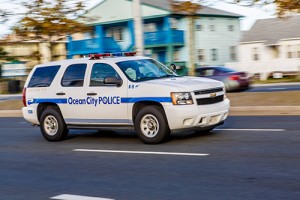
OCEAN CITY — The heroin epidemic battle will soon be getting another weapon in the arsenal after the state last week approved funding for license plate reader technology for the Ocean City Police Department to deploy along the Maryland-Delaware line in the resort.
The Maryland Heroin and Opioid Emergency Task Force, formed last year to study and report on the growing epidemic of the dangerous narcotic across the state, last week delivered its interim report to the Governor’s Office of Crime Control and Prevention. The report, which was borne out of a series of task force meetings all over the state during the summer months, outlines Maryland’s strategies for dealing with the epidemic going forward, including a series of resource allocations to be implemented in the short term.
Among the resource allocations spelled out in the interim report is a $124,635 grant to the Ocean City Police Department paid through the Governor’s Office of Crime Control and Prevention to fund License Plate Reader (LPR) technology. License Plate Reader technology is being increasingly utilized by law enforcement agencies all over the country for a variety of uses.
In simplest terms, the LPR scans thousands of vehicle license plates in a short time and quickly enters the information into national and state databases. The information can then be relayed to law enforcement agencies notifying them of the presence of suspected drug dealers, fugitives wanted on warrants, Amber alerts, suspects wanted in other areas and many more. Just last week, an LPR was utilized to quickly detect and apprehend the suspect in the fatal shooting of two television journalists in Virginia for example.
In north Ocean City, the new LPR funded through the Governor’s Office of Crime Control and Prevention last week will allow the OCPD to target heroin entering Maryland through the resort from Delaware and points north. While the new LPR will be set up near the Delaware line, the technology is certainly not new to the resort area, according to OCPD spokesperson Lindsay Richard.
“This new LPR that will be placed in the area of the Maryland-Delaware border line will be the third one installed here in Ocean City,” she said. “The exact location has not been confirmed yet. Just last week, coincidentally the same day the funding was announced for this one, an LPR was installed on Route 90 and there has been a temporary LPR on Route 50 just west of Ocean City for some time now.”
Richard said the new LPR near the Maryland-Delaware line will have a primary function of tracking and targeting the flow of heroin and other narcotics into the resort and ultimately across the state.
“Our Narcotics Unit has found that a significant amount of heroin in our area originates in the Philadelphia area,” she said. “Because Route 1 and Coastal Highway is a major corridor from Philadelphia to Ocean City, the LPR located in north Ocean City will be paramount in fighting heroin in our area.”
While the new LPR in north Ocean City will be funded by and dedicated to targeting the flow of heroin into Maryland, it has many other applications that will aid law enforcement in the resort area, according to Richard.
“Beyond the LPR’s uses in the fight against heroin, LPR technology is used to scan for stolen vehicles, identification of persons with active warrants for their arrest, and monitoring for Amber alerts,” she said. “Information from LPR reads may be matched against databases for wanted persons, protection orders, missing persons, gang members, known and suspected terrorists, supervised releases, immigration violators and national sex offender lists.”
According to the Maryland Coordination and Analysis Center, the LPR technology provides law enforcement with automated detection of a vehicle’s license plate as it passes the reader. The LPR system consists of a high-speed camera, either at a fixed location or mounted to a patrol vehicle, and a computer to convert data from electronic images of vehicle license plates into a readable format, and then compare the information against specified databases of license plates.
The system attaches camera identification, date, time and location information, including GPS coordinates, to the digital image maintained electronically in a central location. The digital image can include additional information such as the vehicle’s make and model, the vehicle’s driver and passengers, distinguishing features including dinks, dents and bumper stickers and the state of registration. If a given plate is listed in the database, the system is capable of providing the vehicle’s location, direction of travel and the types of infractions related to the notification.
While the LPRs can provide an invaluable tool for law enforcement, the system is not without its detractors. In recent years, the American Civil Liberties Union (ACLU) has spoken out about the broad discretion used by some agencies to collect and store information about vehicles and their occupants.

